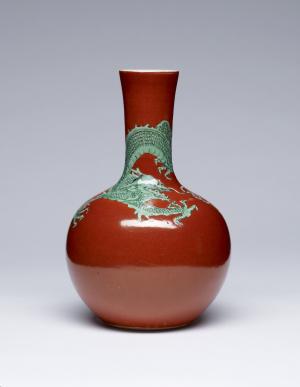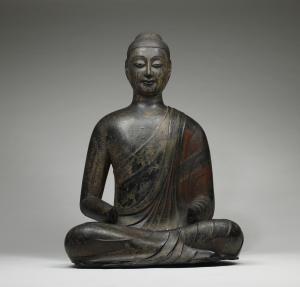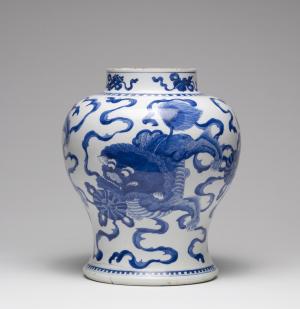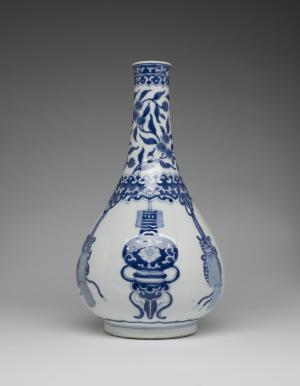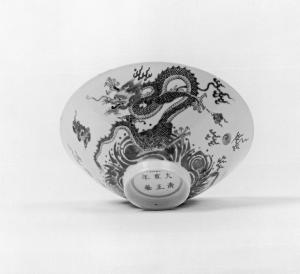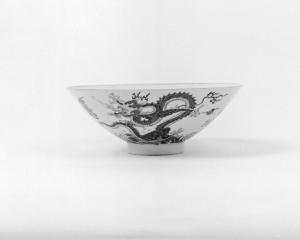Ritual Diadem with Five Buddhas
詳細資料
Diadems such as this one, with five segments bearing images of the five cosmic Buddhas, are worn by Buddhist monks and priests during the performance of certain rituals, especially those involving the initiation of a disciple into a particular set of esoteric teachings. Each Buddha presides over one of the five Buddha Families and makes a particular gesture ("mudra"). As they appear in this crown from left to right, they are: Amitabha (“Infinite Light”), in the gesture of meditation; Vairochana (“Radiant”), with hands in a position that seems to be a variation on the gesture of enlightenment; Akshobhya (“Unshakeable”), in the earth-touching gesture; Ratnasambhava (“Jewel-Born”), in the gesture of bestowal; and Amoghasiddhi (“Unfailing Success”), in the gesture of reassurance. Each Buddha is also associated with a particular color, but the maker of the diadem embroidered them all with the same color of thread, giving them a harmonious appearance. They also sit on nearly identical lotus pedestals and lion thrones, and are framed by the same auspicious vine motif. The five-part form of this diadem has origins in Tibet, but this one was made in China, where Tibetan Buddhist traditions and art forms were also practiced.
Sonam Tashi, Hong Kong; purchased by John and Berthe Ford, Baltimore, July 1984; given to Walters Art Museum, 2016.
高:7 × 寬:16 × 深:10 英吋 (17.8 × 40.6 × 25.4 公分)
絲
金箔
銀箔

